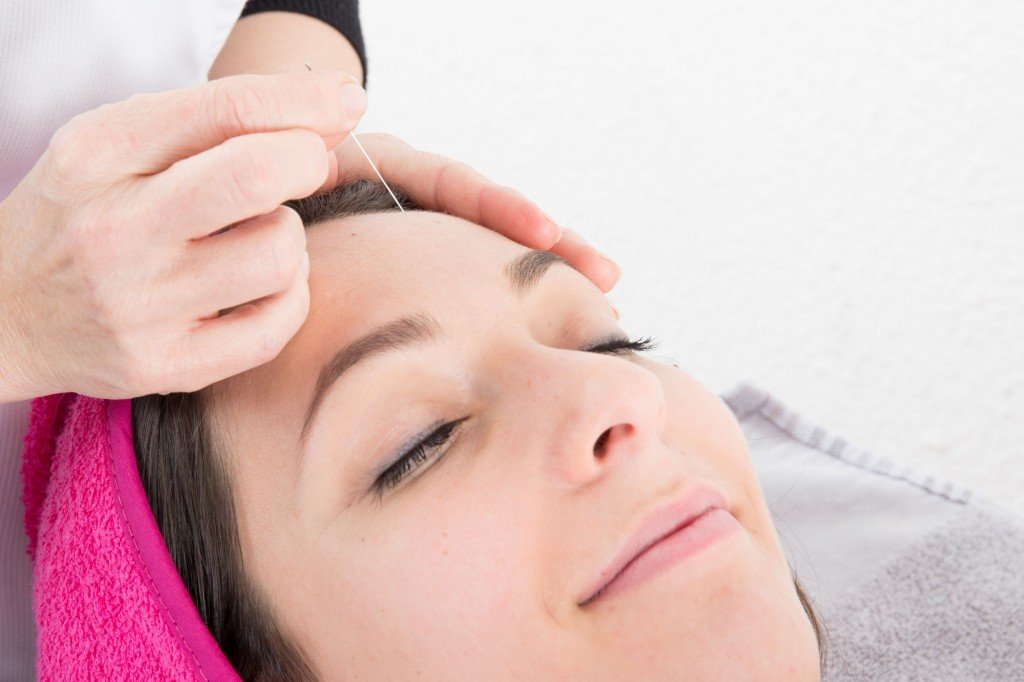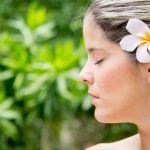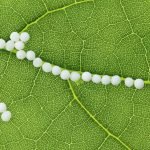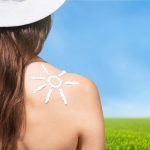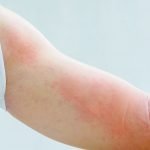Katarine Holewa, ND, BSc, RN
The value of acupuncture in the treatment of dis-ease has been known for centuries, having been used in Asia since times BC. As naturopathic physicians, we recognize the substantial benefits provided by all forms of Traditional Oriental Medicine (TOM)—not only acupuncture, but also Chinese herbs, medicinal foods, etc. Indeed, many of us utilize it in daily practice for a multitude of reasons, ranging from pain alleviation and hormone regulation, to stress management and insomnia.
Facial/Cosmetic Acupuncture
One style of acupuncture that is becoming more popular in recent years in North America (though long-used in Asia), which is utilized by many acupuncturists and which some naturopathic doctors are starting to incorporate into their practices is facial/cosmetic acupuncture. This modality has been advertized and flaunted in the media in recent years as “The new facelift” and as an alternative to botulinum toxin injections. While these may sound like bold and possibly exaggerated statements, and while I’m not sure these claims are 100% accurate, I do believe that facial/cosmetic acupuncture has much to offer patients natural seeking treatments for common skin conditions, age-related skin changes, and general preventative dermatological care.
Several variations of facial and/or cosmetic acupuncture protocols exist, these names commonly being used interchangeably in the media. In reality, the different systems may vary significantly from one another. Some forms exclusively utilize tiny hand needles into specific points along the meridians on the face, while others may involve more invasive threading of longer needles through the superficial layers of the dermis in altogether different point locations (which may lie along the typical acupuncture meridians, or not). In either case, variability can increase further as individual practitioners frequently add their own flair to their protocols, such as incorporating jade and gemstones, massage, or herbal preparations (applied topically or taken internally by the patient).
Obviously, there exist both similarities and differences when compared with TOM acupuncture. In both cases, protocols may be focused on either the treatment of pathology, prevention of future dis-ease, or overall wellness and qi balancing.1 A practitioner might recommend facial/cosmetic acupuncture specifically for goals that might include improving overall skin health, treating any number of skin conditions (rosacea, acne, etc), reducing signs of skin stress and aging (wrinkles and sun spots), and delaying, overall, the aging process. Other differences may include the type of needles used, frequency and length of treatment, as well as any other personal variations the practitioner incorporates.1
Typically, needles are placed in specific points on the face, neck, around the ears, and along the hairline, most of which correspond to regular points along the meridians. These needles are working locally, bringing qi to the area and helping to disperse toxins and excess fluid that might have accumulated there.1 Points along the body will be added, with the intention of balancing hormones, eliminating toxins, and improving the overall balance and flow of qi throughout the body, as determined by the presenting case.1,2,3 The body points are critical to achieving positive results, as they are first and foremost helping to bring balance and smooth flow of qi to the body1 – and as we know, optimal beauty and health are impossible when the body is out of balance!
Beneficial Effects
The effects of facial/cosmetic acupunctures can be quite dramatic, depending on the patient. Some of the skin differences/effects noticed by patients include:
- Elimination of fine lines and reduction in deeper wrinkles
- Lifting of drooping eyelids, sagging cheeks and jowls
- Decreased under-eye bags and overall facial puffiness
- Improvement in hormonal acne and excess oiliness
- Diminished signs of rosacea, spider veins, broken capillaries, redness and inflammation
- Improved facial color, skin tone/balance, and skin moisture level
- Tightened pores and overall smoother skin
Systemically, patients also regularly report improved energy levels and sleep, decreased stress, and an overall enhancement in health and well-being. These together are certainly attributed to the promotion of qi balance throughout the body (as well as improved hormone balance, digestive health, etc),1,2 which, as we know, helps to slow the aging process.
Mechanisms of Action
Explanations for why and how facial/cosmetic acupunctures is able to bring about these improvements in appearance and overall health include, but are not exclusive to, that the following1:
Needling of points on the face has been shown to…
- Help increase local blood circulation
- Help eliminate excess fluids and toxins from the skin and subdermal tissue
- Help improve muscle and overall skin tone
Needling the points on the meridians of the body is known to1,3…
- Improve hormone balance (a key component in a majority of skin disorders)
- Improve gastrointestinal health (a major organ system that is intimately related to skin health)
- Help balance the mental-emotional body, thus reducing anxiety and depression (which can significantly age an individual inside and out)
- Improve fluid movement, lymph drainage, and overall detoxification
- Improve the balance and flow of qi throughout the meridians of the body
Procedure & Safety
As with traditional styles of Oriental acupuncture, results are typically attained after a course of several 1-hour treatments. Most therapists recommend a minimum of 8-10 treatments, either weekly or bi-weekly, with optimal results being achieved after a full protocol of 10-15 treatments.1 Maintenance appointments are always recommended, either monthly or quarterly through the year, depending on the presenting condition and the individual patient. And though a full set of treatments will bring about the most obvious and sustaining results, most patients tend to see and feel benefit (both in appearance and in overall well-being) after only 2 to 3 treatments.
Typically, facial/cosmetic acupuncture procedures are safe, extremely gentle, and virtually painless. They typically involve both hand needles for the face and neck (these being approximately 0.16 mm in diameter and only 7 mm in length), and more standard-sized needles for body points (as well as for some points on the face and head). Potential risks of facial/cosmetic acupunctures are identical to those related to traditional acupuncture.1 Patients need to be advised, for example, that there may be mild bruising or bleeding at the needle insertion sites (often minimized by applying a thin layer of arnica gel to the skin prior to or following treatment), or infection (very rare, as needles are sterile and single-use only). These side effects are extremely rare and, as with any treatment method, almost completely avoided when the treatment is approached in a safe and sterile manner.1,3
Personal Experience
I use facial acupuncture in my practice, and have used it enough to believe in its benefit and potential to improve appearance and quality of life in my patients. Thus far, the age range of patients with whom I’ve used this modality ranges from 26 (for a pre-wedding “facelift”) to 58 (for general skin tonification and reduction of fine lines and eyelid drooping). The most obvious improvement that I’ve seen was in a 37-year-old patient with a history of acne rosacea, which had plagued her throughout her adult years. I worked with this woman for 8 weeks, 3 weeks prior to starting a 5-week twice-weekly acupuncture protocol. This patient’s symptoms improved dramatically, and though I also incorporated nutritional counseling and some supplements, she and I were both confident that acupuncture significantly improved her condition. Nearly all those I’ve treated have been satisfied with their results; in fact, only a couple of individuals didn’t feel very obvious facial improvement.
Of course, as with much of naturopathic medicine, one cannot always be absolutely sure that results are exclusively brought about by 1 specific mechanism. In the case of both facial and cosmetic acupunctures, is the improvement in appearance due to the needles in the face? Or, is it due to improvement in qi flow and overall hormonal balance? Or to the dietary modifications and resulting improved digestion, assimilation and elimination? It’s impossible to know, but I personally do trust in the value of this protocol. If, in the end, my patients are feeling better about themselves and their appearances (therefore self-esteem), are overall better balanced and well, and are happy with their course of treatment, then I’m happy to include it in my repertoire as an option for treating my patients to the best of my ability.
If you commonly use acupuncture already in your practice, if you see many patients for skin conditions and concerns, or if you deal frequently in “anti-aging” medicine, I encourage you to consider adding facial/cosmetic acupuncture to your toolbox. We all know the benefits of acupuncture; this is simply a possibly new variation that may help you and your patients achieve the results you seek.
Happy needling!
 Katarine Holewa, ND, BSc, RN offers primary health care for the whole family. Prior to completing her training at the Boucher Institute of Naturopathic Medicine in Vancouver, BC, she worked as a registered nurse in Calgary and Vancouver. Dr Holewa focuses on preventative medicine, creating and maintaining positive lifestyle changes, and finding the underlying causes of illness. In her practices she uses nutrition, botanical medicine, acupuncture, homeopathy, neural therapy, and more. Dr Holewa enjoys educating her patients and helping them reach their own unique health goals. She practices in Victoria, BC, Canada.
Katarine Holewa, ND, BSc, RN offers primary health care for the whole family. Prior to completing her training at the Boucher Institute of Naturopathic Medicine in Vancouver, BC, she worked as a registered nurse in Calgary and Vancouver. Dr Holewa focuses on preventative medicine, creating and maintaining positive lifestyle changes, and finding the underlying causes of illness. In her practices she uses nutrition, botanical medicine, acupuncture, homeopathy, neural therapy, and more. Dr Holewa enjoys educating her patients and helping them reach their own unique health goals. She practices in Victoria, BC, Canada.
References
- Lucas M. Cosmetic Acupuncture: A Textbook for Practitioners of the Mei Zen Acupuncture System. 2nd ed; 2010. http://www.cosmeticacupunctureseminars.com/dr-martha-lucas-cosmetic-acupuncture-seminars.html. Accessed January 15, 2014.
- Kuoch D. Acupuncture Desk Reference; Volumes 1 & 2. Los Angeles, CA:
Acumedwest, LLC; 2007. - Lian YL. The Pictoral Atlas of Acupuncture: An Illustrated manual of Acupuncture points. 1st ed. Pottsdam, Germany: HF Ullman Publishing; 2005.

